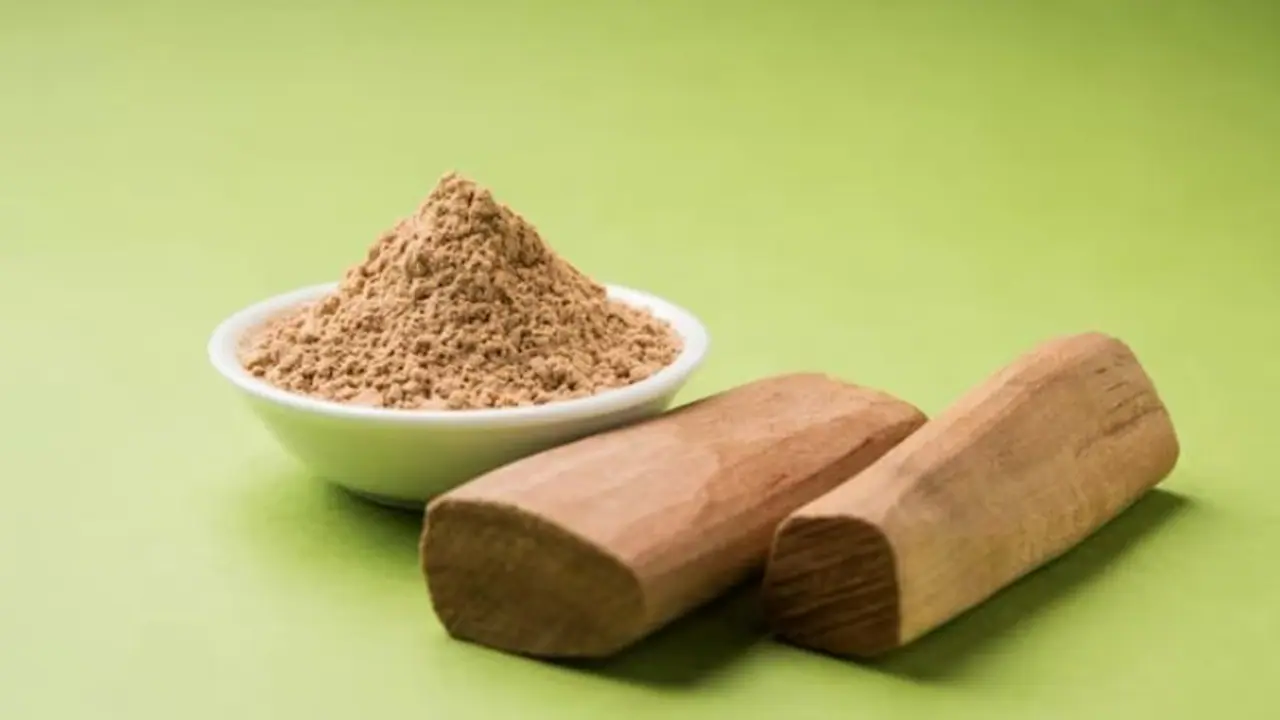Applying Chandan or Tilak is often considered an act of seeking blessings or bestowing them upon others. During religious ceremonies or gatherings, individuals may receive Tilak as a symbol of divine grace or as a mark of participation in sacred rituals.
The application of Chandan (sandalwood paste) or Tilak (a religious mark on the forehead) holds profound cultural, religious, and spiritual significance in various traditions around the world. This timeless practice, deeply rooted in history, transcends mere aesthetics and serves as a symbolic connection to spirituality and tradition.

People always apply sandalwood or Chandan paste to the foreheads of deities and devotees to create a tilak, or vermillion mark. Applying the Chandan tilak between the eyebrows allows one to open the middle Nadi or invisible channel. This corresponds to the name "Sushumna" in the language of yoga. It is the location of the centre of human intelligence and thought. Humans are known to have the Pingala Nadi (the sun side) in their right nostril or channel. On the other hand, Ida Nadi, or "the moon side," refers to the left one.
Tilak, which means "mark" in Sanskrit, is a paste composed of ash, sandalwood, vermillion, clay, or turmeric that is usually applied on the forehead and occasionally to other body areas like the arms, neck, or chest to indicate which branch of Hinduism a devotee follows spiritually. The substance and shape of the tilak typically correspond to the God or Goddess that the lineage worships.

Let's look at basic significance of wearing 'Chandan' or 'Tilak':
1. Tilak is considered to be the 'third eye' of human body:
Vedic scriptures describe seven primary chakras, or discs of concentrated subtle energy, running along the centre of the body. Each chakra is associated with a different facet of an individual's physical, emotional, or psychological makeup. Tilak is applied to the area of the forehead between the eyebrows, which is home to the ajna chakra. Since the word ajna means "perceive" or "command," the ajna chakra is referred to as the "eye of intuition," because it allows a person to perceive information that is otherwise invisible to the naked eye. This "third eye" is a powerful spiritual sensor that facilitates inward concentration on the Divine. As a reminder of the ultimate purpose of existence, tilak is consequently placed on the ajna chakra to invoke this divine energy.
2. Tilak signifies the temple within the body:
Hindu scriptures hold that every person's body is a precious temple of God and should be treated as such because the Divine resides within everyone. Wearing a tilak serves as both an auspicious ornament for this temple and a reminder that, above all other species, the human body is a priceless vessel that allows one to actively engage in spiritual activities and meditate. All parts of preserving one's physical health, including exercise, eating a healthy diet, and practising good hygiene, should be considered sacred pursuits if selfless service is the embodiment of genuine love, and one's body is what makes it possible to engage in this practise. Applying tilak is one of the techniques mentioned in Hindu scriptures that aid in refocusing one's spiritual concentration in a world full of distractions that frequently draw attention away from life's greater goal.
3. Chandan paste charges sun element of Pingala Nadi
A few beliefs are in accordance with the traditional wisdom. One is in which the human consciousness survives death for a few hours. And even modern science supports this similar viewpoint, which would leave you in wonder. Additionally, in accordance with final rites customs, the deceased's forehead is covered with the Chandan before the body is taken to the cremation site. But keep in mind that one should only use their right hand to produce this paste. It is believed by some that the sun element of the Pingala Nadi is charged by this paste. Thus, this aids in reviving the deceased body's remaining life energy. The cremated human body breaks down into these five fundamental elements: Nature's Panchabhootas.
4. Calming and Cooling properties
Chandan, known for its cooling nature, can have a soothing effect on the skin and is believed to calm the mind, making it popular during religious ceremonies and meditation.
5. Expressing Devotion and Surrender:
The application of Chandan or Tilak is a visible expression of devotion and surrender to a higher power. It serves as a personal commitment to one's faith and spiritual journey.
Although tilak can be applied at any time, it is normally recommended to do so right after a shower, when you are the cleanest. Wearing tilak is especially appropriate when taking part in puja, or "worship" in Sanskrit, visiting a temple, or going to a special Hindu celebration. When you wear a tilak every day, you serve as a reminder of your own spiritual aspirations to others who observe you. It is a metaphorical magnet that draws people's attention to a higher spiritual realm of existence.
